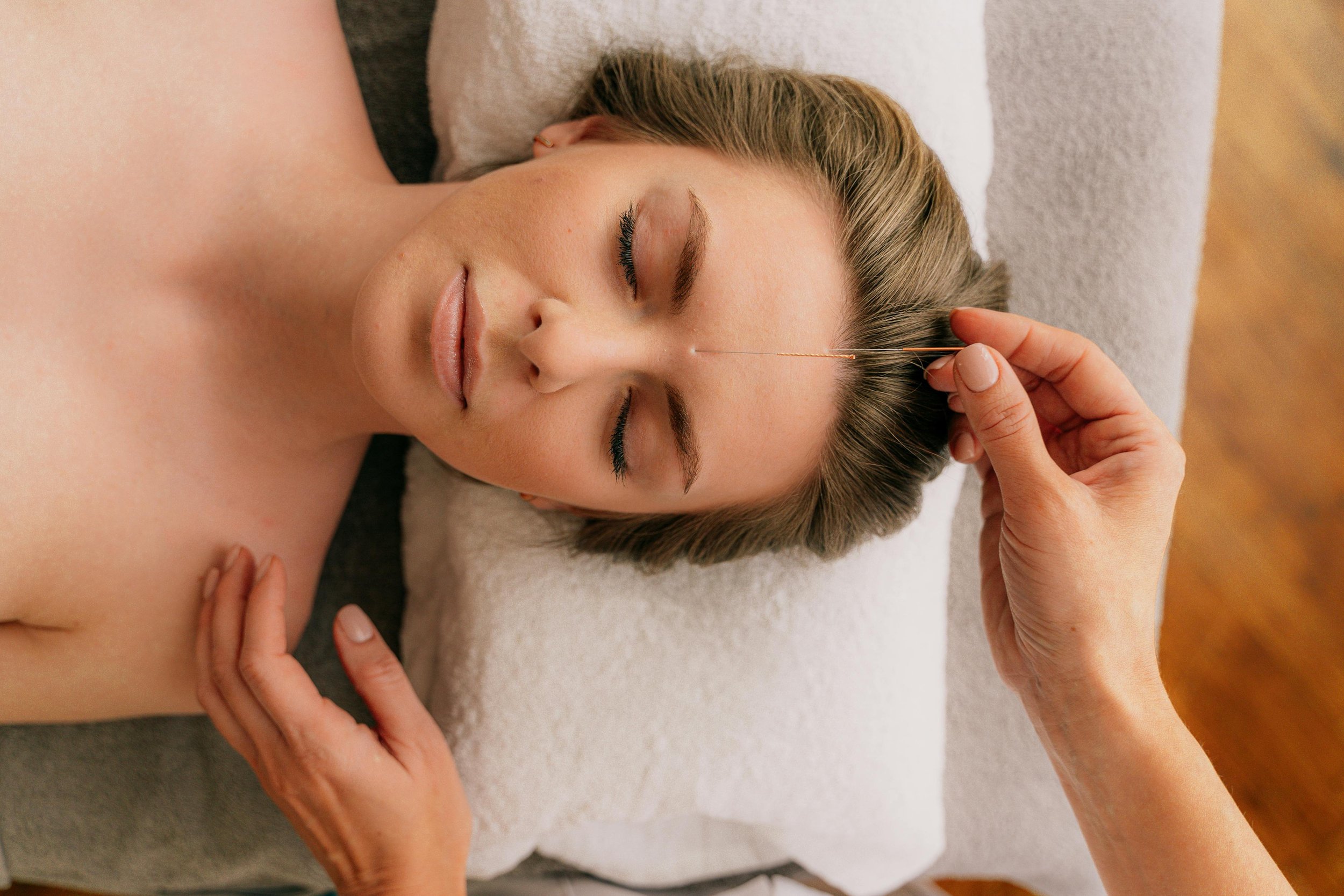
Facial Acupuncture
If you’re looking for natural and safe ways to look AND FEEL younger, you’re in the right place! Facial acupuncture WORKS!! Here’s a story about how I found THAT out:
When I was first learning facial acupuncture in my apprenticeship, I’d be standing in the corner watching my mentors work away on peoples faces. Usually it would be the same 2 or 3 people (patients x, y, z for the story sake) for a 10-20 week stretch, since the clinic would work in 10 treatment chunks. So I’d watch lots and lots of needles go in these 2 or 3 patients while my legs fell asleep and I got tired and hungry being a lamppost in the corner.
At one point I had to step away from the office to get some schoolwork done so I took a brief break of 2-3 months - no big deal, then I come back to work a few weeks later to start up apprenticing again, like nothing happened.
One afternoon we’re looking at the schedule and planning the day, and waiting for the first facial patient to come in. That patient walks in as we’re getting ready, and I thought to myself “who’s that?” The clinic was working with the same handful of patients, so I thought that maybe there were some new patients. I ask the practitioner “who’s that”? He said “that’s patient x”. I said “PATIENT X?! NO WAY!!!”
Now I NEVER want to over promise and under-deliver but I will say, that was a pretty amazing thing.
So if you’re interested in giving it a try or knowing more, sign up for a free call below! We’re looking forward to connecting!
WANT TO LEARN MORE? OK, here it is.
Facial acupuncture has been around for a LONG time. Is it because people like to fool themselves about what works and what doesn’t? NO! It’s because it WORKS. But like going to the gym, botox, learning a new skill, it takes repetition.
How does it work?
It works the same way that acupuncture works in the rest of the body - by telling the body where to focus its vitality and healing resources, and giving it time to mend itself. It’s like telling the body - hey all that energy you’re wasting worrying and stressing, let’s put that towards looking younger. Sound good?
Body says ok, and get’s to healing. Repeat the process enough, and the skin starts to tighten, collagen develops, blood flow is restored, and the face begins to look more plump, young and full, shiny and lustrous.
In a few short weeks, we want you to look in the mirror and say: “I look beautiful, and I feel beautiful.” We recommend partnering with us for 10 week sessions. In order to get the best possible results with acupuncture, facial or otherwise, you need to have a certain amount of treatments in a certain amount of days. For example, 10 treatments in 10-20 weeks will provide a MUCH more noticeable result than 10 treatments in 10 days or 10 treatments in 10 years. There’s a sweet spot we need to hit. If you’re looking for a quick fix, one time treatment that will make you look ten years younger forever - this isn’t that. But if you’re looking for a SAFE, EFFECTIVE method with 100’s of years of clinical PROOF to back it up, then you might be a good candidate for facial acupuncture.
All of our needles are STERILE, and one time use ONLY. The needles are thin - not at all like a needle for a shot or vaccine, but much thicker. As far as cosmetic treatments go, facial acupuncture is on the low end of the discomfort scale, meaning, compared to a lot of treatments out there - it’s a lot less painful.
The needles are tapped gently in, nice and shallow, so your skin gets full of viand blood, looking plump and young, while you enjoy a calming nap, or have pleasant chat with the practitioner.
If you’re not sure and need to ask more questions, OR are ready to schedule, Click below!!! We look forward to chatting!
-By. Dr David Santander L.Ac


